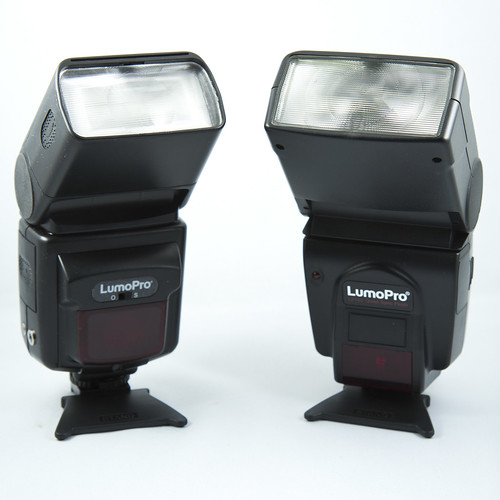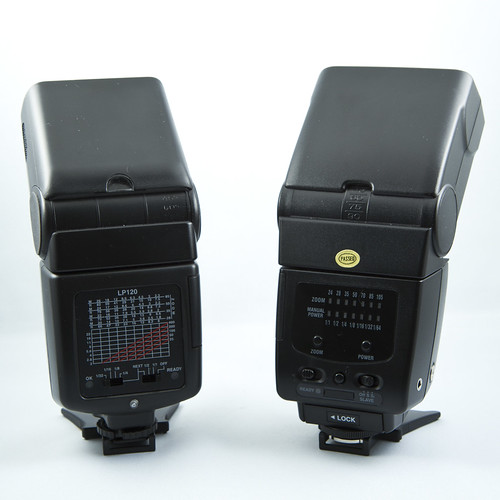So, here are two simple 'product shots' for day 152 and a 'first impressions' review of the new flashes.

The first thing you notice with the LP160s (on the right) is the size of the flash head. Although the unit is overall about the same height, the flash head is quite a bit wider. It's not large enough that it would be a concern, it is still very portable. The new head also rotates through 180 degrees one way and about 135 degrees the other. This gives you the advantage of making the optical slave orientation independent of the flash head. The LP120 does not rotate at all, so this is a major advantage.
Additionally, the mode switch on the front of the LP120 has been relocated to the back on the LP160, and there is an LED ready indicator on the front instead. It's quite a handy addition, and one that I am already finding useful.

The differences on the back of the units are far more interesting. Gone are the two selection switches for power, and in it's place are two LED scales for power and zoom along with a button for each and the relocated mode switch.
The LP160 uses a motorized seven-position zoom, which replaces the manual four-position head on the LP120. Similarly, the LP120 was only capable of six power settings, where the LP160 allows you to select from seven. The addition of the 1/64th power mode is very welcome considering that the LP160 offers twice the power of the LP120.
Also new is the Si mode option, which is designed to ignore pre-flashes when using TTL metering. Since I always fire my flashes with manual settings I haven't tested this, but reviews I have read say that it works as advertised.
The last thing that I wanted to test was the recycle rate. With freshly charged Eneloops, full power recharges were achieved in three seconds as advertised. The LP120s were much closer to six seconds, so this is another great improvement.
Build quality is similar to the LP120 with a construction of fairly lightweight plastics. I've tossed my 120s in my bag without concern before, but I wouldn't consider them rugged, and weather sealing is non-existent. Don't abuse them and they should last. LumoPro also now includes a clip-on wide angle adapter and flash foot in the box with the LP160.
So to sum up, the LP160 is more powerful, versatile, quicker to recharge, and includes some handy accessories for the grand total of $30USD more than the LP120. It's a fantastic little piece of kit for a ridiculously good price. I've added two to my kit to use as fill and hair lights, and my LP120 will be relegated to background light duty from here on out.
No comments:
Post a Comment